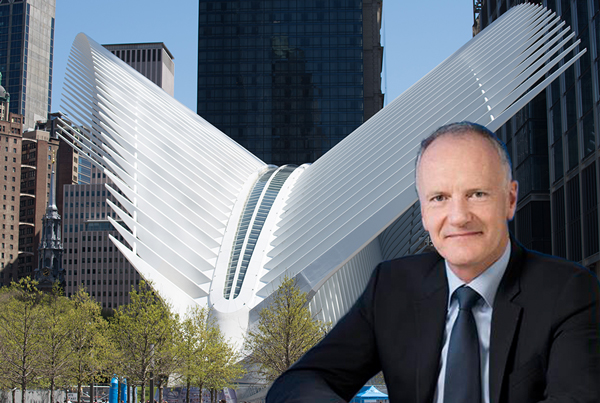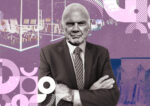Trending
Could Unibail’s Westfield deal pressure Simon Property Group to make a big buy?
Mall REITs are consolidating on both sides of the Atlantic

UPDATED, Dec 22, 9:54 a.m.: Unibail-Rodamco’s $15.7 billion bid to buy Westfield Corp. has the market buzzing about whether or not Simon Property Group will pull out its checkbook and acquire one of its smaller REIT rivals.
Unibail, Europe’s largest real estate investment trust, is creating a $70 billion retail behemoth with its acquisition of Westfield. That puts it squarely in the rearview mirror of Simon, which has a portfolio of real estate valued at $110 billion.
And it comes at a time of consolidation in the mall REIT sector on both sides of the Atlantic.
“Next on the list is Simon Property,” said Kai Klose, a stock analyst who covers Unibail for Berenberg Bank. “If they can make a move that makes sense and be more dominant, I would not be surprised if they would do something.”
Simon already owns a 20.3 percent stake in Europe’s second-biggest mall operator, Klépierre, which had been mentioned as a potential bidder for British REIT Hammerson. About a week before the Westfield deal was announced, Hammerson agreed to buy rival Intu Properties for $4.5 billion, and experts say odds are higher now that Simon could make a move through Klépierre that would allow Hammerson’s shareholders to reject the Intu deal.
Another possibility is that Klépierre could form a joint venture with the German Otto family’s ECE Projektmanagement GmbH & Co. KG, possibly through an acquisition of Deutsche EuroShop.
Stateside, activist investor Daniel Loeb’s Third Point LLC disclosed in November that it had built a position in Macerich, the country’s third-largest shopping center REIT, which last faced activism after it rejected Simon’s $17 billion takeover bid in 2015. And hedge fund Elliott Management in November acquired a stake in Taubman Centers, joining Jonathan Litt as the second activist investor in the country’s fourth-largest mall REIT.
But others are not so convinced that Simon can be pressured into a deal.
“I don’t think Simon management has ever been pressured to do anything,” Sandler O’Neill analyst Alex Goldfarb said. “Unless they’re invited into a transaction, they’ve said they’re out of the big deal business.”
The Unibail Rodamco deal could have consequences on the market’s other big acquisition: Brookfield Property Partners’ bid to buy General Growth Properties. GGP earlier this month rejected the $14.8 billion bid from Brookfield, which is expected to make a second, higher offer.
Brookfield’s $23-per-share offer represented a cap rate of 5.4 percent, while Unibail’s deal to buy Westfield implies a cap rate of 4.9 percent, or what would work out to almost $27 per share for GGP.
“BPY was in the driver’s seat in setting U.S. mall pricing with its bid for GGP – in an environment where transaction activity had been non-existent for some time. For this reason, it was hard to conclude that the offer for GGP was too low even though it was at a discount to our NAV estimate,” read a report from Green Street Advisors.
The New Westfield
Another result of Unibail’s purchase is that Westfield should become more competitive with Simon when it comes to its cost of capital.
Simon has a weighted average cost of capital of 5.11 percent, according to the website GuruFocus. Westfield’s is 4.41 percent.
But Unibail’s average cost of capital is 1.55 percent, and analysts believe that after the acquisition, Westfield’s will fall to somewhere in the 3 percent range.
“I think, ultimately, you will see the average cost of debt for Westfield fall on the back of this deal,” said Robert Woerdeman, an analyst who covers Unibail for Kempen.
Westfield is also being acquired by a company that, contrary to most U.S. mall REITs, focuses on its cash flow instead of net asset value.
“Unibail has historically been able to deliver outsized returns on their development pipeline. That’s future NAV value creation, not necessarily NAV today,” said Peter Papadakos, a stock analyst in the U.K. for Green Street Advisors.
And in a presentation Westfield put together explaining the merits of the deal, the company highlighted the potential of cross-fertilization across the two firms when it comes to the tenants in their respective portfolios.
Victoria’s Secret, Pink and Bath & Body Works make up the biggest tenants in the Westfield portfolio, with 78 stores. In the Unibail portfolio, Zara and its sister brands Pull & Bear and Bershka, which has a pop-up store in Soho at 580 Broadway, make up the largest share with 165 stores.
But CBRE’s Richard Hodos said its unlikely tenants would pick a location based on the fact they lease space somewhere else with a landlord.
“No retailer these days opens a store due to ‘relationships’ with (mall) landlords or developers,” he said. “If the shoe fits, fine, but customer data will tell the story, not a preferred relationship with a landlord.
Correction: A previous version of this story misstated the size of Simon’s stake in Klépierre.




